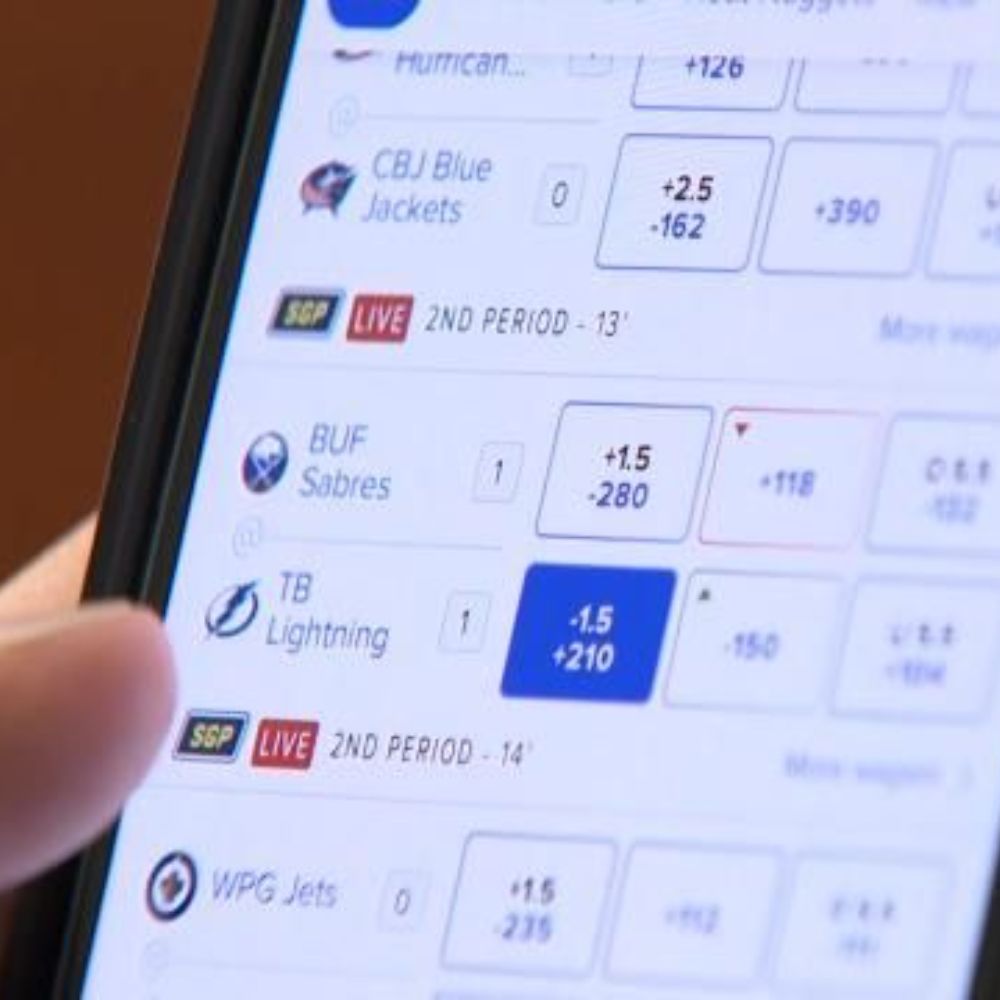
In the dynamic world of sports betting, odds play a crucial role in determining the potential outcomes of wagers. Understanding what the + and – symbols mean in betting odds is vital for any sports bettor who wishes to make informed decisions. This guide will delve into the intricacies of sports betting odds, breaking down their significance, how they reflect probabilities, and how to use them to your advantage when placing bets.
Contents
What Are Sports Betting Odds?
– Why Are Odds Important in Sports Betting?
– How Do Odds Reflect the Probability of an Outcome?
– What Types of Odds Formats Are Used in Sports Betting?What Do the + and – Symbols Represent?
– What Does a Positive (+) Odds Mean?
– What Does a Negative (-) Odds Mean?
– How Do + and – Odds Indicate the Underdog vs. Favorite?How to Read Betting Odds: Examples and Calculations
– How Can You Calculate Potential Winnings from + Odds?
– How Can You Calculate Potential Winnings from – Odds?
– What Are Some Real-World Examples of + and – Odds?Why Do Betting Odds Change?
– What Factors Influence Changes in Sports Betting Odds?
– How Do Public Perception and Betting Volume Affect Odds?What Strategies Can Be Used When Betting with + and – Odds?
– How Can You Identify Value Bets Using Odds?
– What Are the Risks of Betting on the Underdog vs. the Favorite?
– How Can You Use Odds to Inform Your Betting Decisions?Conclusion: What Should You Take Away About Sports Betting Odds?
– What Key Points Should You Remember About + and – Odds?
– How Can This Knowledge Improve Your Betting Experience?
– What Resources Are Available for Further Learning?
What Are Sports Betting Odds?

Sports betting odds are numerical representations of the likelihood of a specific outcome in a sporting event. They communicate not only the probability of a team or player winning but also the potential payout a bettor could receive from their wager. Odds can vary significantly across different sportsbooks, so it’s essential to find the most favorable odds before placing a bet. By understanding how odds work, bettors can make more informed decisions and maximize their potential profits.
In essence, odds serve as the foundational element of the betting industry, guiding bettors in their choices. For instance, when looking at a matchup between the Kansas City Chiefs and another NFL team, the odds provide insights into which team is favored to win. Various formats exist, including American odds, decimal odds, and fractional odds, which can cater to different preferences among bettors. Regardless of the format, the key takeaway is that odds are essential for determining both risk and reward in any betting scenario.
Why Are Odds Important in Sports Betting?
Odds are important in sports betting because they establish a framework for understanding potential outcomes and payouts. They inform bettors about which teams or players are favored to win, thereby influencing betting strategies. In the context of point spread betting, odds can indicate how many points a favored team must win by for a bet to be successful. As such, understanding sports betting odds is crucial for identifying value bets and capitalizing on favorable situations.
The knowledge of odds empowers bettors to assess their risk tolerance and make informed betting decisions. For example, a bettor may see odds of -150 on a favorite, meaning they would need to bet $150 to win $100. Conversely, odds of +150 on an underdog indicate that a $100 bet would yield a $150 profit if the underdog wins. This information allows bettors to strategize their wagers effectively, maximizing their chances of winning while minimizing potential losses.
How Do Odds Reflect the Probability of an Outcome?
Odds reflect the probability of an outcome by quantifying the implied likelihood of a specific event occurring. For instance, if a team is given +200 odds, this suggests an implied probability of 33.33% that they will win the game. Conversely, -200 odds indicate a higher probability of 66.67% for the favorite. This relationship between odds and probability is fundamental for sports bettors seeking to make informed decisions based on statistical analysis.
The conversion of odds into probabilities allows bettors to gauge whether a wager offers value. If the bettor believes a team has a higher chance of winning than the odds suggest, placing a bet could be advantageous. Understanding how odds work and how they correlate with actual game dynamics, such as team performance and injuries, enhances a bettor’s ability to make informed choices. Therefore, being adept at interpreting odds not only aids in assessing risk but also in maximizing potential payouts.
What Types of Odds Formats Are Used in Sports Betting?
There are several types of odds formats used in sports betting, with American odds, decimal odds, and fractional odds being the most common. American odds use a plus or minus sign to indicate the favorite and underdog. For example, -150 indicates the favorite, meaning a bettor must wager $150 to win $100. On the other hand, +150 signifies the underdog, where a $100 bet would yield a $150 profit if successful.
Decimal odds, widely used outside the United States, present a straightforward way to calculate potential payouts. For instance, decimal odds of 2.00 imply a total payout of $2 for every $1 wagered, including the original stake. Fractional odds, such as 5/1, indicate that a bettor would win $5 for every $1 wagered. Understanding these different formats is essential for sports bettors, as it allows them to effectively read and interpret betting odds across various platforms and make informed decisions based on their preferred betting style.
What Do the + and – Symbols Represent?
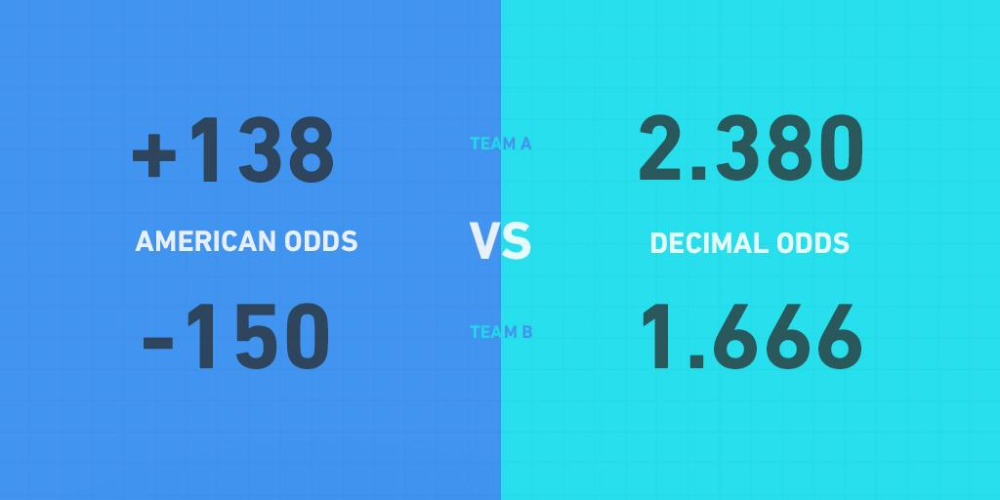
The + and – symbols in sports betting odds provide critical information about the favorite and the underdog in a given matchup. The minus sign (-) denotes the favorite, indicating that this team or player is more likely to win the game. In contrast, the plus sign (+) represents the underdog, suggesting that this team or player is less likely to secure a victory. Understanding these symbols is essential for bettors looking to navigate the betting landscape effectively.
For example, if the betting odds for a particular NFL game are -200 for the favorite and +150 for the underdog, it illustrates that the sportsbook has determined that the favorite has a stronger chance of winning. The amount that a bettor needs to wager to achieve a certain payout is also revealed through these symbols. A sound grasp of what these symbols mean allows bettors to assess the risk associated with their wagers and formulate strategies that can lead to success in their betting endeavors.
What Does a Positive (+) Odds Mean?
Positive odds indicate the potential profit a bettor could earn on a successful wager placed on an underdog. For instance, if a bettor sees odds of +250, this means that for every $100 wagered, the bettor would win $250 if the bet is successful. This format signifies that the underdog is less likely to win according to the sportsbook but offers a higher reward in the event of a victory. Understanding positive odds is crucial for bettors who wish to capitalize on opportunities that may not seem favorable at first glance.
In sports betting, the allure of positive odds can be tempting, particularly when considering the underdog’s potential to upset a favorite. Bettors often look for value in these scenarios, where they believe the odds offer a better return than the actual probability of winning. By analyzing team performance, matchups, and other relevant factors, bettors can make informed decisions when wagering on underdogs. Thus, grasping the significance of positive odds is essential for anyone aiming to navigate the betting landscape effectively and maximize their potential payouts.
What Does a Negative (-) Odds Mean?
Negative odds signify the amount a bettor must wager to win a specified amount on the favorite. For example, odds of -150 indicate that a bettor needs to bet $150 to win $100. This format reflects the bookmaker’s confidence in the favorite’s chances of winning, suggesting a likely outcome based on team performance, statistics, and other relevant data. Understanding negative odds is essential for bettors as they navigate their options in the betting landscape.
The significance of negative odds lies in their ability to guide bettors in assessing risk. Betting on favorites can be a safer strategy, especially when the odds are heavily favored, but the potential payouts may be lower compared to wagering on underdogs. By analyzing negative odds, bettors can make informed decisions based on the risk-to-reward ratio of their wagers. Thus, comprehending what negative odds mean is crucial for bettors striving to balance their betting strategies and maximize their overall success in sports betting.
How Do + and – Odds Indicate the Underdog vs. Favorite?
+ and – odds serve as a clear indicator of which team or player is favored to win and which is considered the underdog. The minus sign in front of the odds indicates the favorite, while the plus sign indicates the underdog. This distinction is vital for bettors, as it helps them understand the relative risk associated with their wagers. By identifying favorites and underdogs through these symbols, bettors can adjust their betting strategies accordingly.
Understanding the implications of these odds is crucial for making informed betting decisions. For instance, betting on the favorite may seem less risky, but the lower potential payout can be a deterrent for some bettors. Conversely, betting on the underdog can yield higher profits, but it comes with a greater risk of losing. By recognizing how + and – odds indicate the favorite and underdog, bettors can create a balanced approach to their wagering strategies, effectively managing their risks while pursuing profitable betting opportunities.
How to Read Betting Odds: Examples and Calculations
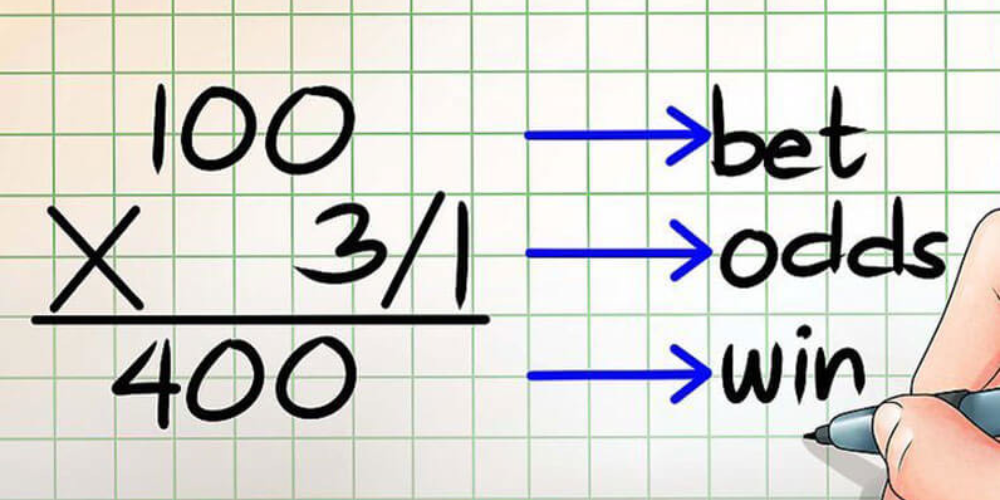
Reading betting odds is a fundamental skill for any sports bettor looking to make informed decisions. By understanding the various formats—American, decimal, and fractional—bettors can better assess their wagering options. For example, if a bettor encounters odds of +200, this would imply that a $100 bet would yield a total payout of $300, including the original stake. Familiarity with these calculations allows bettors to gauge potential winnings effectively.
Likewise, negative odds like -150 require a bettor to wager $150 to earn a $100 profit. This understanding of how to read and interpret betting odds is essential for anyone looking to navigate the betting landscape successfully. By practicing these calculations and familiarizing themselves with different odds formats, bettors can make informed decisions that enhance their overall betting experience. Ultimately, proficiency in reading odds not only aids in understanding the betting lines but also enables bettors to identify the most favorable opportunities.
How Can You Calculate Potential Winnings from + Odds?
Calculating potential winnings from positive odds is straightforward and essential for any sports bettor. To determine the potential profit, one can use the formula: (Stake x Odds) / 100. For instance, with +150 odds, a bettor wagering $100 would calculate their potential winnings as ($100 x 150) / 100, resulting in a $150 profit. This calculation highlights the allure of betting on underdogs, as the payouts can be significantly higher than those associated with favorites.
Moreover, understanding how to calculate potential winnings empowers bettors to assess the risk versus reward of their wagers. By knowing how much they stand to gain, bettors can make more informed decisions based on their betting strategies and objectives. This knowledge is particularly useful when analyzing matchups and determining which underdogs might provide the best value. Ultimately, mastering these calculations enhances a bettor’s ability to navigate the sports betting landscape effectively.
How Can You Calculate Potential Winnings from – Odds?
Calculating potential winnings from negative odds requires a slightly different approach than positive odds. The formula for determining potential profit with negative odds is: (Stake / Odds) x 100. For instance, if a bettor places a $100 wager on -150 odds, their calculation would be ($100 / 150) x 100, resulting in a potential profit of approximately $66.67. This understanding of the mechanics behind negative odds is crucial for bettors aiming to maximize their returns.
Moreover, knowing how to calculate potential winnings from negative odds helps bettors assess the risk associated with their wagers. Since betting on favorites often yields lower payouts, understanding the numbers allows bettors to make informed decisions about their stakes. This knowledge can shape their betting strategies, guiding them toward opportunities that align with their risk tolerance and profit goals. Overall, mastering these calculations equips bettors with the tools needed for successful wagering.
What Are Some Real-World Examples of + and – Odds?
Real-world examples of + and – odds can help illustrate the practical implications of these betting formats. For instance, in an NFL matchup, if the New England Patriots are favored at -180, this suggests that bettors must stake $180 to win $100. Conversely, if the opposing team, the Miami Dolphins, has +160 odds, a $100 bet would yield a $160 profit if they win the game. These examples highlight the differences between betting on favorites and underdogs, illustrating the potential rewards and risks involved.
Furthermore, real-world odds can fluctuate based on various factors, including injuries, team performance, and public perception. Understanding how these odds reflect the dynamics of a specific matchup allows bettors to make informed decisions. By analyzing the odds in the context of real games, bettors can better assess the potential value of their wagers. This practical knowledge equips bettors with the insights needed to navigate the complexities of sports betting effectively.
Why Do Betting Odds Change?
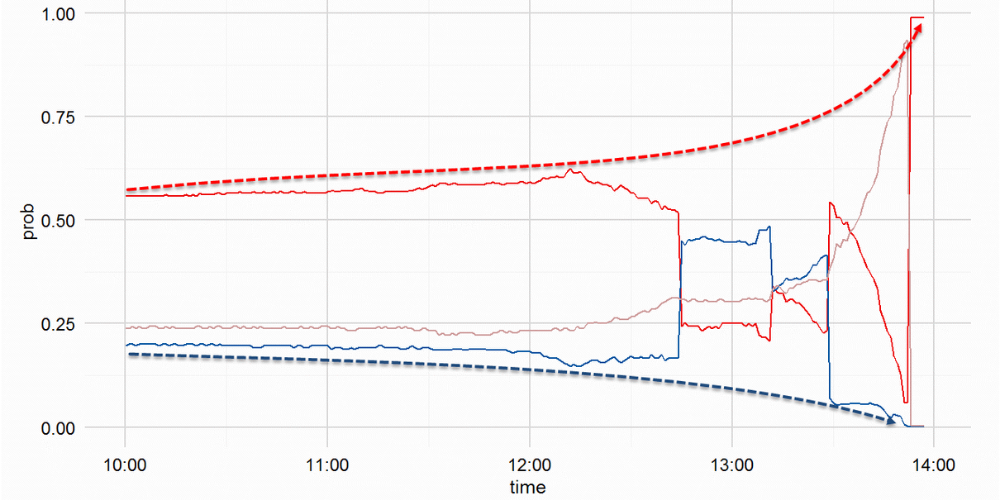
Betting odds change due to various factors that influence the dynamics of a sporting event. Bookmakers continuously monitor these factors, adjusting the odds to balance their books and minimize risk. Key elements that can trigger a change in betting odds include injuries to key players, changes in team performance, and shifts in public perception about a matchup. As these variables evolve, the odds reflect the changing landscape of the betting market.
Understanding why odds change is essential for bettors looking to capitalize on favorable situations. For instance, if a star player is injured, the odds for their team might shift, making it an opportune time to bet on the underdog. Conversely, a sudden influx of bets on one side can lead bookmakers to adjust the odds to encourage balanced action. By staying informed about these factors, bettors can make timely and informed decisions that enhance their chances of winning in the betting industry.
What Factors Influence Changes in Sports Betting Odds?
Several factors influence changes in sports betting odds, including team performance, player injuries, and public sentiment. For example, if a key player on a favored team gets injured before a game, sportsbooks may adjust the odds to reflect the decreased likelihood of that team’s victory. Similarly, if a team has been performing poorly, this can prompt a shift in odds as bettors reassess their expectations for the matchup.
Additionally, public perception plays a significant role in odds adjustments. If a particular team garners significant media attention or has a large fan base, this can lead to a surge in betting volume, prompting bookmakers to adjust the odds accordingly. Understanding these influencing factors allows bettors to stay ahead of the game, enabling them to make timely and informed decisions based on the evolving landscape of sports betting.
How Do Public Perception and Betting Volume Affect Odds?
Public perception and betting volume have a substantial impact on sports betting odds. When a large number of bettors place wagers on a specific team, sportsbooks may adjust the odds to mitigate their risk. This adjustment ensures that the bookmaker remains profitable even if the favored team wins. For example, if a popular team attracts heavy betting volume, the odds may shift to favor the underdog in order to balance the action on both sides.
Furthermore, public sentiment can also sway the odds in response to recent events, such as a significant win or loss. Bettors often react to narratives created by media coverage, which can lead to fluctuations in betting volume. By understanding how public perception and betting volume affect odds, bettors can identify opportunities to capitalize on potential mispricing, ultimately enhancing their chances of making informed decisions in the betting industry.
What Strategies Can Be Used When Betting with + and – Odds?

When betting with + and – odds, employing effective strategies can significantly enhance your chances of success. One key strategy is to identify value bets, where the odds offered by sportsbooks do not accurately reflect the true probability of an outcome. By analyzing team performance, statistics, and other relevant factors, bettors can uncover opportunities where they believe the odds are in their favor, leading to more profitable wagers.
Additionally, understanding how to assess the risk associated with betting on favorites versus underdogs is crucial. Betting on underdogs may yield higher potential profits, but it also carries greater risk. Conversely, betting on favorites can be safer, but the payouts may be lower. Balancing these strategies enables bettors to create a diversified betting portfolio that aligns with their risk tolerance and profit goals, ultimately leading to more informed betting decisions.
How Can You Identify Value Bets Using Odds?
Identifying value bets using odds requires a keen understanding of both the betting market and the underlying probabilities of outcomes. A value bet occurs when the odds provided by a sportsbook suggest a higher likelihood of success than the actual probability of an outcome occurring. For instance, if a bettor believes a team has a 60% chance of winning, but the odds reflect only a 50% chance, this presents a valuable opportunity.
To identify these opportunities, bettors should analyze various factors, such as team form, head-to-head records, and player injuries. By comparing their own assessments with the odds offered by sportsbooks, bettors can spot discrepancies and capitalize on value bets. This strategy not only enhances potential profits but also helps bettors make informed decisions based on data-driven analysis, ultimately improving their overall betting experience.
What Are the Risks of Betting on the Underdog vs. the Favorite?
Betting on the underdog presents both opportunities and risks that every bettor must consider. Underdogs often offer higher potential payouts due to their perceived lower chances of winning. However, this increased risk can lead to losses if the underdog fails to perform as expected. Bettors must carefully evaluate the matchup, team dynamics, and external factors before placing a wager on an underdog.
Conversely, betting on favorites can provide a safer investment, as these teams are generally more likely to win. However, the payouts are typically lower, which can diminish the overall potential profit. Understanding these risks allows bettors to create a balanced strategy that accounts for their risk tolerance and betting goals. By weighing the pros and cons of betting on favorites versus underdogs, bettors can make informed decisions that enhance their chances of success in the betting industry.
How Can You Use Odds to Inform Your Betting Decisions?
Using odds to inform betting decisions involves analyzing the data they provide and understanding their implications. Bettors should pay attention to how the odds change leading up to a game, as this can indicate shifts in public sentiment, injuries, or other critical factors. By staying informed about fluctuations in odds, bettors can identify potential value opportunities and adjust their strategies accordingly.
Moreover, understanding the relationship between odds and implied probabilities enables bettors to assess the risk associated with each wager. By comparing their own evaluations of a team’s chances against the odds presented by sportsbooks, bettors can make more informed decisions that align with their betting strategies. Ultimately, leveraging odds effectively enhances a bettor’s ability to navigate the sports betting landscape and maximize their overall success.
Conclusion: What Should You Take Away About Sports Betting Odds?
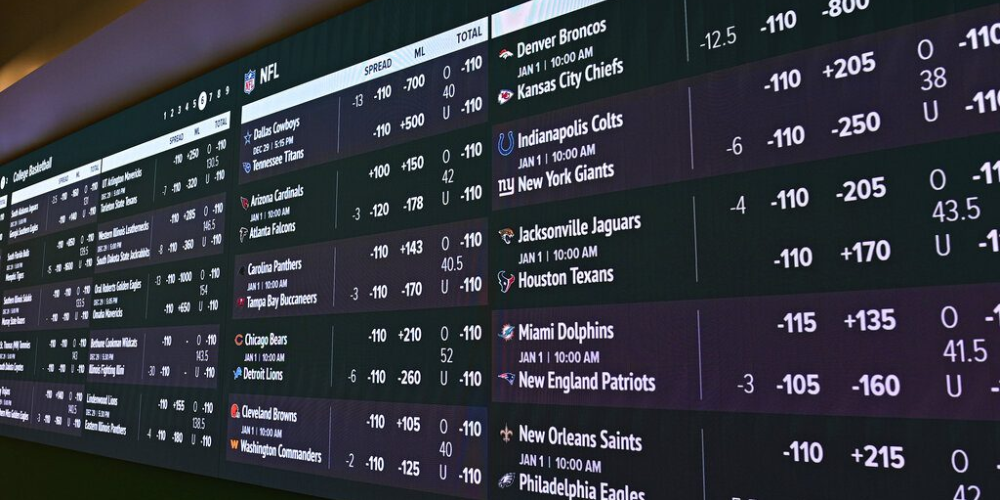
In conclusion, grasping the fundamentals of sports betting odds is imperative for maximizing your potential profit. The + and – signs in American odds format tell you about the favorites and underdogs in a matchup. Specifically, a minus sign (-) indicates the amount you need to bet to win $100, implying that the team is favored to win the game. On the other hand, a plus sign (+) shows how much profit you would make on a $100 bet, highlighting the underdog’s position. By understanding these concepts, bettors can make informed betting decisions and better navigate the betting industry.
Moreover, recognizing the significance of the odds can enhance your ability to find the most favorable odds across various sportsbooks. This not only helps you maximize your total payout but also empowers you to choose the best betting strategies suited to your risk tolerance. Ultimately, a comprehensive understanding of how odds work and the implications of the signs in front can lead to more successful wagering outcomes in the long run.
What Key Points Should You Remember About + and – Odds?
When it comes to sports betting, there are key points to remember about the + and – odds that can enhance your understanding. First and foremost, the minus sign (-) signifies the favorite team; for instance, an NFL game might feature a team with -150 odds. This means you would need to bet $150 to win $100. Conversely, the plus sign (+) indicates the underdog; if a team has +150 odds, a $100 bet would yield a $150 profit if they win. Understanding these odds is essential for any bettor aiming to make informed decisions in their betting practices.
Additionally, it is crucial to recognize that odds can fluctuate based on various factors, including team performance, injuries, and public sentiment. This fluidity in betting lines means that a bettor must stay informed about the latest news surrounding their chosen teams or players. Ultimately, being able to read and interpret betting odds accurately allows you to develop successful betting strategies tailored to your goals. Remember that a solid grasp of these key points can significantly enhance your overall betting experience.
How Can This Knowledge Improve Your Betting Experience?
Understanding what the + and – mean in sports betting odds can vastly improve your overall betting experience. By knowing how to read these odds, a bettor can make informed decisions on where to place their wagers. For instance, if you identify a strong underdog with positive odds, you might choose to bet on them, believing they have a good chance of winning the game despite the odds. This can lead to a substantial potential profit, enhancing your excitement and engagement in the betting process.
Moreover, this knowledge can also aid in developing effective betting strategies. By recognizing which teams are favored and which are underdogs, you can leverage point spread betting to maximize your chances of winning. Understanding how odds work enables you to identify when to bet on favorites or when to take a risk on an underdog. Ultimately, this deeper understanding helps you make more informed betting decisions, leading to a more rewarding and enjoyable betting experience.
What Resources Are Available for Further Learning?
For those looking to expand their knowledge of sports betting odds, numerous resources are available to assist you in your journey. Online betting guides are an excellent starting point, offering comprehensive explanations of how odds work, including the difference between American odds, decimal odds, and more. Many sportsbooks also provide tutorials and articles designed to help bettors understand the nuances of betting lines and strategies. Engaging with these resources can significantly enhance your understanding of sports betting.
In addition to online guides, forums and communities dedicated to sports betting serve as valuable platforms for sharing experiences and strategies with other bettors. Participating in discussions can provide insights into how seasoned bettors interpret odds and make informed betting decisions. Furthermore, podcasts and video content focused on sports betting can offer practical tips and real-time analysis of various matchups. By utilizing these resources, you can continue to improve your skills, making you a more knowledgeable and confident bettor.
